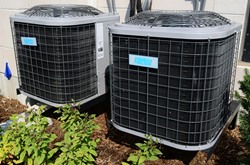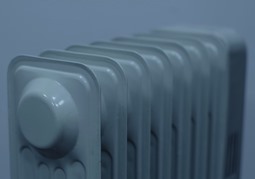How to Pick the Right Heating and Cooling Certification Class near San Pierre Indiana
 Once you have decided on a career as a heating and air conditioning specialist, the next step is to find an HVAC vocational school near San Pierre IN. But with so many to pick from, how do you select the right one to get the training that you require? Some potential students will make their selection based exclusively on the cost of tuition or how near the school is to their residence. While these are relevant considerations, they are not the only ones to investigate. Some of the other details that you need to research are the graduation completion rates of the HVAC schools, their reputations, and if they are accredited by professional trade organizations. Those and additional benchmarks will be discussed in more detail later in this article. But before we discuss how to select an HVAC trade school, let’s take a look at what a heating and a/c specialist does to become a licensed professional tradesman.
Once you have decided on a career as a heating and air conditioning specialist, the next step is to find an HVAC vocational school near San Pierre IN. But with so many to pick from, how do you select the right one to get the training that you require? Some potential students will make their selection based exclusively on the cost of tuition or how near the school is to their residence. While these are relevant considerations, they are not the only ones to investigate. Some of the other details that you need to research are the graduation completion rates of the HVAC schools, their reputations, and if they are accredited by professional trade organizations. Those and additional benchmarks will be discussed in more detail later in this article. But before we discuss how to select an HVAC trade school, let’s take a look at what a heating and a/c specialist does to become a licensed professional tradesman.
Becoming an HVAC Tech
 HVAC is an acronym that is widely used in the trade that stands for “Heating, Ventilation and Air Conditioning”. HVAC technicians provide services for the installation, repair and maintenance of central air conditioners, furnaces, boilers, hot water heaters and heating systems. As skilled tradesmen, they are generally required to be licensed, though each state and regional municipality has its own requirements. Attaining professional certification is not mandatory, but an optional means for San Pierre IN HVAC technicians to prove that they are exceptionally proficient and knowledgeable in their area of expertise. There are several acknowledged certifications within the field that are available. Following are some of the significant ones.
HVAC is an acronym that is widely used in the trade that stands for “Heating, Ventilation and Air Conditioning”. HVAC technicians provide services for the installation, repair and maintenance of central air conditioners, furnaces, boilers, hot water heaters and heating systems. As skilled tradesmen, they are generally required to be licensed, though each state and regional municipality has its own requirements. Attaining professional certification is not mandatory, but an optional means for San Pierre IN HVAC technicians to prove that they are exceptionally proficient and knowledgeable in their area of expertise. There are several acknowledged certifications within the field that are available. Following are some of the significant ones.
- North American Technician Excellence (NATE). NATE is a nationally recognized certification for HVAC technicians. The certification is achieved by passing a competency exam and may be earned in one or more specialties.
- HVAC Excellence. This certification offers both a professional and a master specialist credential. Two years of professional experience in addition to passing a comprehensive exam are needed for the professional level certification. Master specialists need to have three years of experience along with a passing score on the professional level examination. As with NATE, certifications are offered in various specialties.
- EPA Section 608. This certification is mandatory for specialists that work with refrigerants. There are 3 forms of certification offered, one for small appliances, and the other two for low and high pressure refrigerants.
Because licensing might be mandated in your location, and you may also wish to earn certification, it’s important that you pick an HVAC trade school that will train you for both. And since you will most likely be working with refrigerants, make sure that the program you choose prepares you for passing the EPA Section 608 examinations.
HVAC Certificate and Degree Classes
 There are a number of alternatives offered for HVAC training in a technical or vocational school. You can obtain a certificate, an Associate Degree, or a Bachelor’s Degree. Acquiring a certificate will take the lesser period of time, typically completed in just 6 months, however some programs are longer. A certificate will qualify you for the majority of HVAC positions, especially if you are licensed and have certification related to the position. The degree programs may provide a competitive edge for securing employment and will deliver more extensive training than the certificate programs. Below is a brief explanation of each option offered near San Pierre IN.
There are a number of alternatives offered for HVAC training in a technical or vocational school. You can obtain a certificate, an Associate Degree, or a Bachelor’s Degree. Acquiring a certificate will take the lesser period of time, typically completed in just 6 months, however some programs are longer. A certificate will qualify you for the majority of HVAC positions, especially if you are licensed and have certification related to the position. The degree programs may provide a competitive edge for securing employment and will deliver more extensive training than the certificate programs. Below is a brief explanation of each option offered near San Pierre IN.
- Certificate. Normally requiring a high school diploma, certificate programs are very popular among entry level commercial or residential HVAC specialists. They provide a solid foundation of skills for employment within the trade.
- Associate Degree. The Associate Degree in HVAC program supplies a more extensive understanding of heating and a/c systems than the certificate program. Typically requiring 2 years to finish, some degrees incorporate an internship or work-study program.
- Bachelor’s Degree. The Bachelor’s Degree in HVAC is geared more towards a career in management as well as business ownership. Some programs call for an Associate Degree, while others are a standard four year program. In addition to being taught how to service and maintain heating and air conditioning systems, you will also study how to design them.
Choosing the ideal credential program will be dependent on what your long term career objectives are, as well as the time and financial resources that you have to commit. One approach is to begin with a certificate or even an Associate Degree program, and after gaining some experience in the field in San Pierre IN, subsequently returning to earn a Bachelor’s Degree. If this is your strategy, be sure to ask the HVAC tech school you are considering about how their returning student program works.
HVAC Classes Online
 Choosing an HVAC school online is one option to obtaining your training and receiving a degree or certificate. Almost all schools will call for some attendance on campus to take part in practical training. Many also offer internship or work-study programs in addition to or as an alternative to practical lab work. But since the rest of the classes may be attended online, this option may be a more convenient solution for some San Pierre IN students that are pressed for time. And some online degree programs are more economical than other traditional choices. Even commuting expenses from San Pierre and study materials may be minimized, helping to make education more economical. And numerous online programs are fully accredited (more on this later). So if your work or family commitments have left you with limited time to attend classes, maybe an HVAC online training program will make it less complicated to accommodate school into your busy lifestyle.
Choosing an HVAC school online is one option to obtaining your training and receiving a degree or certificate. Almost all schools will call for some attendance on campus to take part in practical training. Many also offer internship or work-study programs in addition to or as an alternative to practical lab work. But since the rest of the classes may be attended online, this option may be a more convenient solution for some San Pierre IN students that are pressed for time. And some online degree programs are more economical than other traditional choices. Even commuting expenses from San Pierre and study materials may be minimized, helping to make education more economical. And numerous online programs are fully accredited (more on this later). So if your work or family commitments have left you with limited time to attend classes, maybe an HVAC online training program will make it less complicated to accommodate school into your busy lifestyle.
What to Ask HVAC Schools
 As soon as you have picked the type of certificate or degree that you desire to attain, either on campus or online, you can begin to narrow down your list of schools. As you are certainly aware, there are numerous HVAC trade schools in the San Pierre IN area and across the United States to select from. That’s why it is very important to have a list of important qualifications when making school assessments. As formerly stated in our opening paragraph, location and tuition will probably be the initial two variables you will look at. Following are several additional ones that you need to investigate before enrolling in your school of choice.
As soon as you have picked the type of certificate or degree that you desire to attain, either on campus or online, you can begin to narrow down your list of schools. As you are certainly aware, there are numerous HVAC trade schools in the San Pierre IN area and across the United States to select from. That’s why it is very important to have a list of important qualifications when making school assessments. As formerly stated in our opening paragraph, location and tuition will probably be the initial two variables you will look at. Following are several additional ones that you need to investigate before enrolling in your school of choice.
Accreditation. Many HVAC vocational programs in the San Pierre IN area have acquired either a regional or a national accreditation. They may acquire Institutional Accreditation, which involves the school’s programs as a whole, or Programmatic Accreditation, which pertains to an individual program, for example HVAC technology. Make sure that the school is accredited by a U.S. Department of Education acknowledged accrediting organization, which includes the Accreditation Board for Engineering and Technology. In addition to helping ensure that you obtain a superior education, it may help in obtaining financial aid or student loans, which are frequently unavailable for non-accredited programs. Additionally, a number of states require that the HVAC training course be accredited in order to qualify for licensing.
High Completion Rates. Ask the Heating and Air Conditioning schools you are looking at what their completion rates are. The completion rate is the percentage of students who enroll in and complete the course. A low completion rate could signify that students were dissatisfied with the course and quit. It could also indicate that the teachers were not qualified to train the students. It’s also essential that the schools have higher job placement rates. Older and/or more reputable schools may have a more extensive directory of graduates, which can produce more contacts for the school to utilize for their apprenticeship and job placement programs. A high job placement rate can not only validate that the school has an excellent reputation within the trade, but also that it has the network of San Pierre IN HVAC employers to assist grads acquire apprenticeships or employment.
Apprenticeship Programs. Most HVAC trade programs are taught in conjunction with an internship or an apprenticeship program. Those participating vocational and trade schools will help place you in an apprenticeship program within their network of Heating and Cooling companies or labor unions. Ask if the schools you are comparing have referring partnerships with local San Pierre IN HVAC professionals. An apprenticeship not only offers a valuable experience by supplying practical training, but it also supplies employment opportunities and helps to build relationships in the area HVAC professional community.
Modern Facilities. Make certain that the campus facilities and the tools that you will be trained on are up-to-date and what you will be using in the field. If you are presently in an internship or an apprenticeship, consult with the HVAC specialist you are working with regarding what you should be expecting. If not, ask a local San Pierre IN HVAC company if they can give you some tips. Also bear in mind that unless you are willing to move, the school needs to be within commuting distance of your San Pierre IN home. Remember that if you decide to attend an out-of-state school, besides the added relocation costs there can be higher tuition fees compared to in-state residents.
Smaller Classes. It’s important that you get as much individualized instruction as possible, which can be challenging in larger classes. Ask if you can monitor a couple of the classes so that you can see how big they are and witness first hand the interaction between students and instructors. Talk to several of the students and get their opinions concerning class sizes and instruction. Finally, speak with a few of the teachers and find out what their level of experience is and what certifications or degrees they hold.
Flexible Scheduling. Make sure that the class schedules for the schools you are reviewing are flexible enough to fulfill your needs. If you can only go to classes at night or on weekends near San Pierre IN, check that the programs you are considering provide those options. If you can only attend part-time, make certain that the school you select allows part-time enrollment. Additionally, check out what the policy is to make-up classes should you miss any because of work, illness or family issues.
Considering an HVAC School near San Pierre IN?
Perhaps you are considering enrolling in an HVAC training program in the San Pierre Indiana area. If so, you may find the following background information about the location of your new school campus both interesting and informative.
San Pierre, Indiana
Established and laid out in 1854, the area was originally called Culvertown,[5] although a post office had been established as River in 1853. According to one local tradition, the village later took the name of San Pierre, named after a nearby French-Canadian saloon owner. The story goes that 'Pierre' built a shack some 400 feet south of the village of Culvertown and began to sell whisky there. As a consequence of this inducement, the town shifted slightly to the south and the name was changed to San Pierre.[6] Another tradition records the village being named after a French railroad worker called 'Pierre', with San being added to provide more importance to the name.[7] In any case, the name was changed simply to Pierre in 1894, possibly as a result of increasing tension between Spain and the United States, leading up to the Spanish–American War.[7] Finally the name was changed back to San Pierre in 1899.[6][8]
Due to its closeness to the Jasper-Pulaski Fish and Wildlife Area, each year San Pierre and the surrounding vicinity is briefly home to more than 10,000 of the sandhill crane species of bird during their fall migration.[9] The bird has become so synonymous with the town that it has become an unofficial emblem of the community, including a depiction on the welcome sign.
As of the census[2] of 2000, there were 156 people, 71 households, and 39 families residing in the CDP. The population density was 1,100.2 people per square mile (430.2/km²). There were 77 housing units at an average density of 543.0/sq mi (212.4/km²). The racial makeup of the CDP was 98.72% White, 0.64% Native American, 0.64% from other races. Hispanic or Latino of any race were 0.64% of the population.
HVAC Technician Training Cost San Pierre IN
Picking the ideal HVAC training program is an important first step toward a rewarding career in the heating and cooling field. You originally came to this website because you wanted more information regarding HVAC Technician Training Cost. However, as we have addressed in this post, you need to select an Heating and Cooling trade school and a degree or certificate program that are both accredited and have excellent reputations within the HVAC trade. Other features to look for are lots of hands-on training and state-of-the-art facilities. You should go to each of the schools personally that you are most interested in to inspect the campus and talk with both the faculty and current students. Attempt to get a feel for the quality of the instruction and the interaction between them. Additionally, inquire about scheduling options and whether evening or weekend classes are offered if needed. And remember to inquire about financial aid and student loan options also. If you ask the right questions as we have detailed in our checklist for assessing schools, you’ll be able to filter your choices so that you can make an informed decision. With the appropriate training, hard work and commitment, you can eventually become a licensed HVAC professional in San Pierre IN.
More Hot and Cool Locations in Indiana
Business Results 1 - 10 of 78













